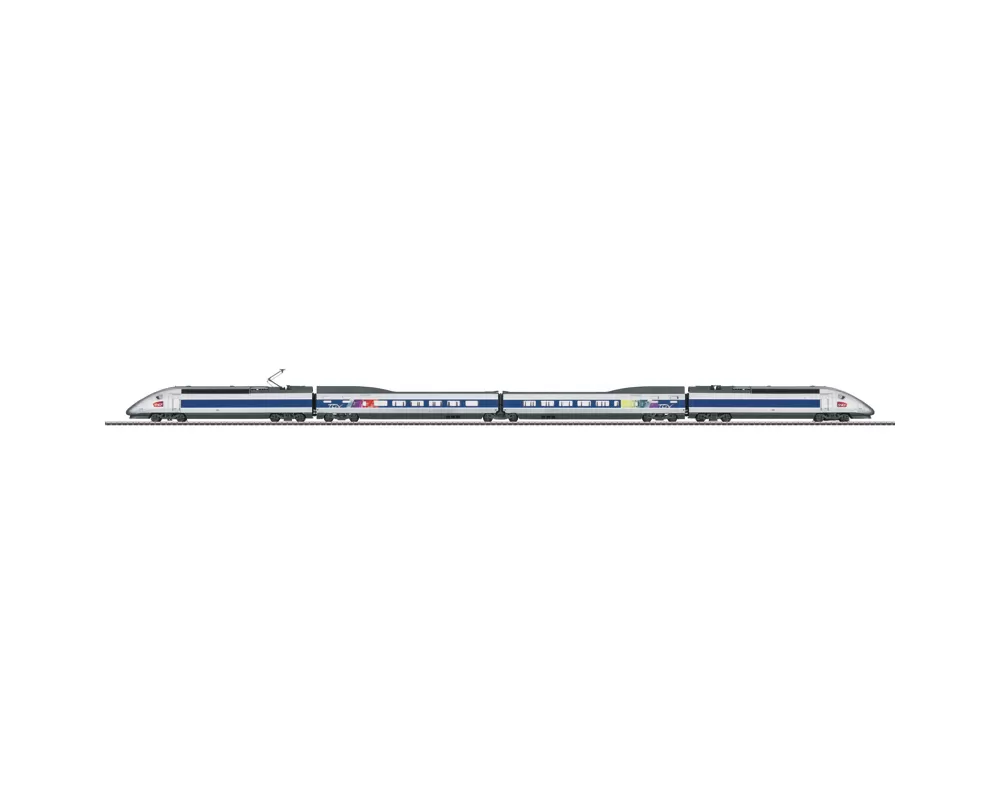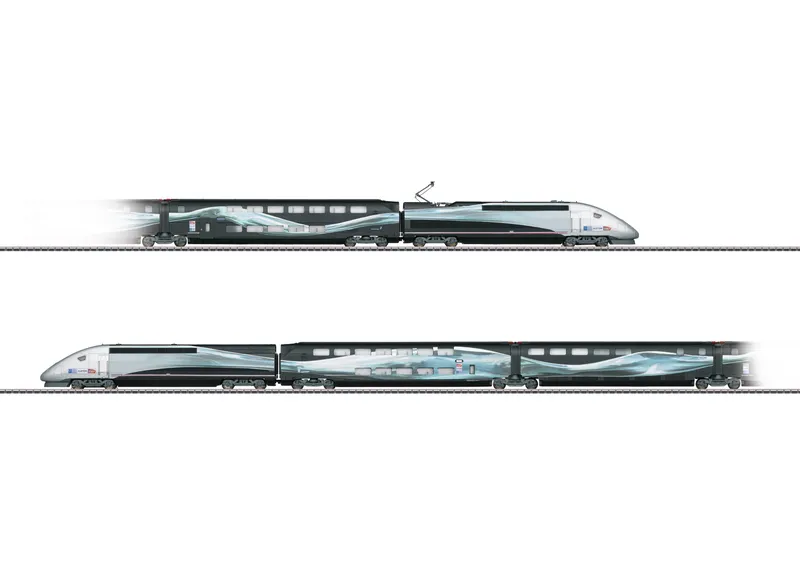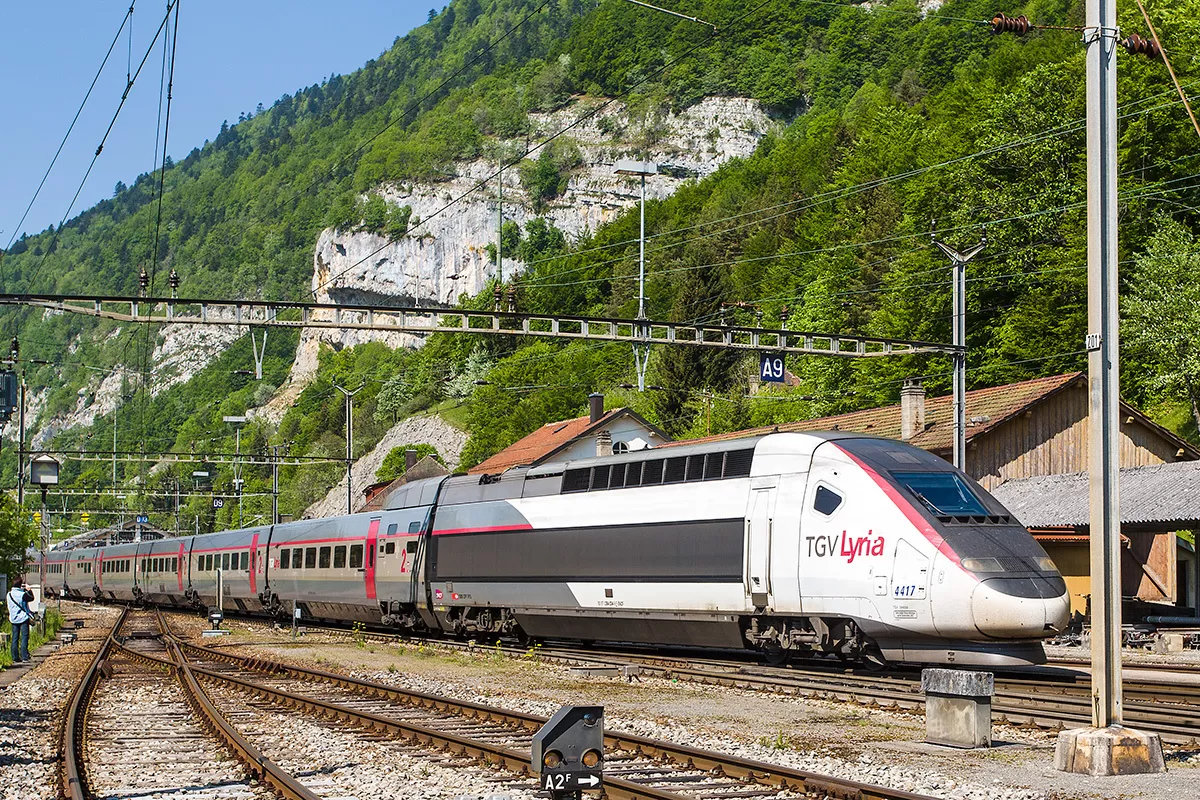
Source: Jean Vernet, Montreux
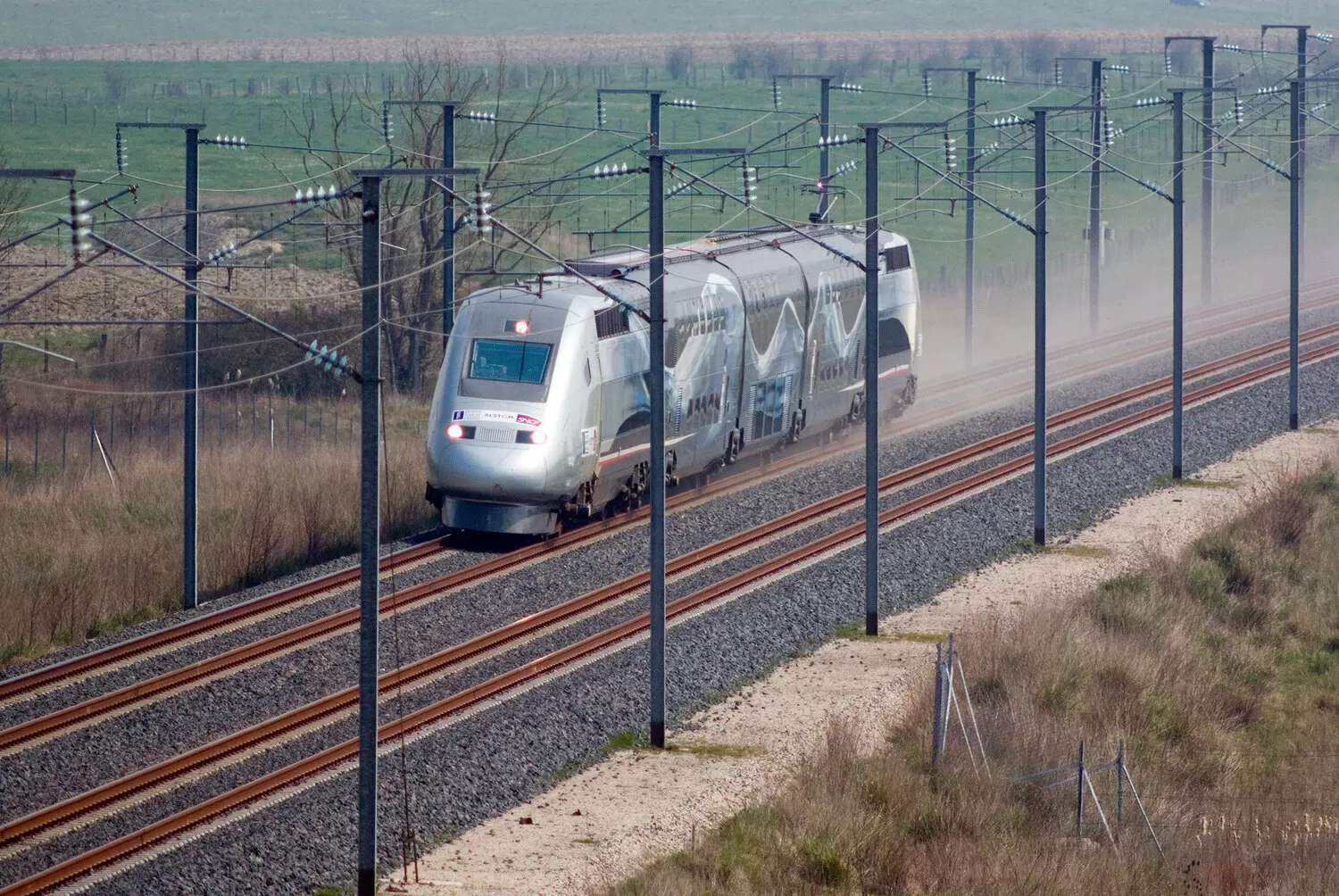
Source: Alain Stoll
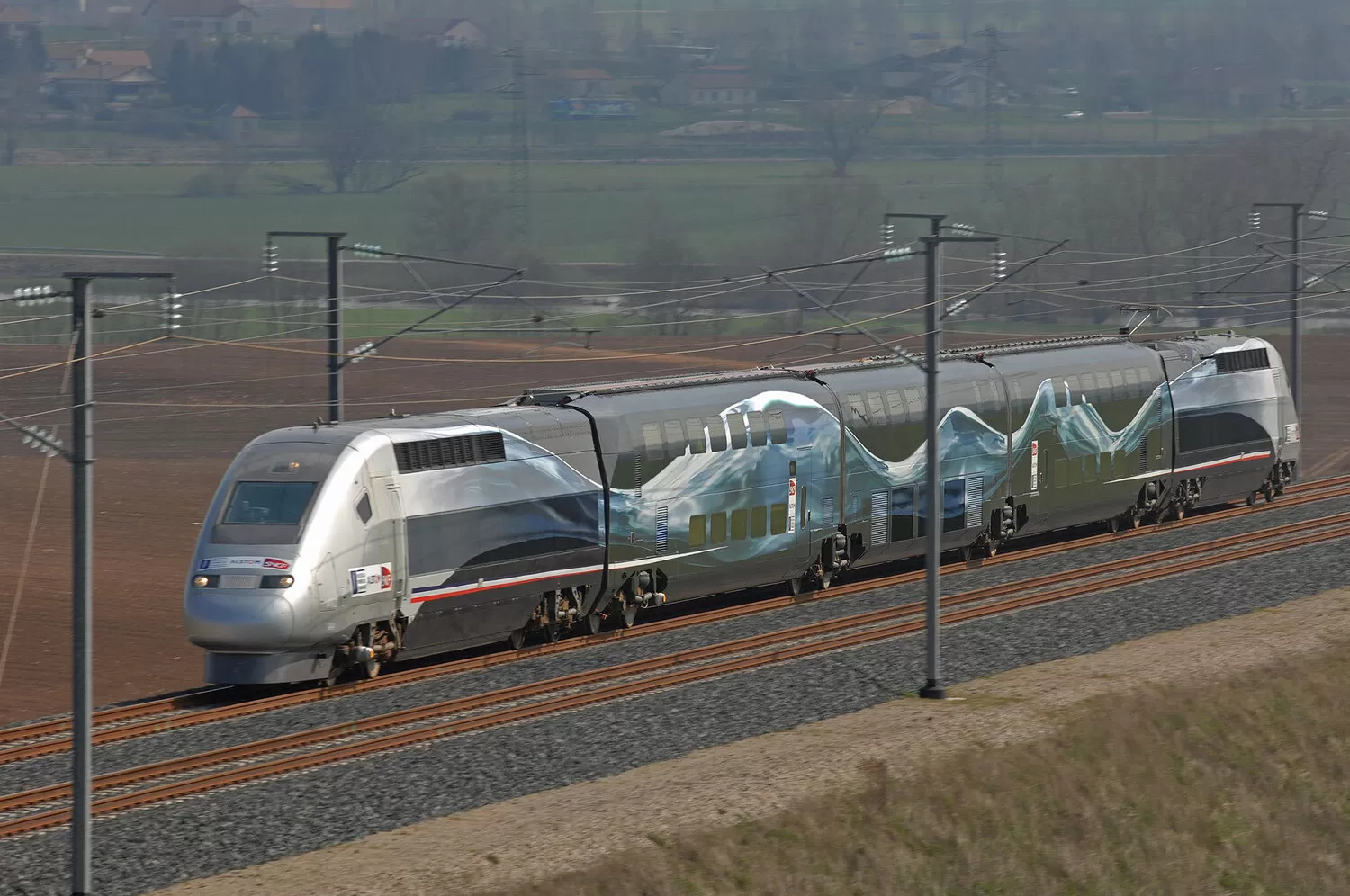
Source: Alstom

Source: auditoire.com

Source: Stephen Rees
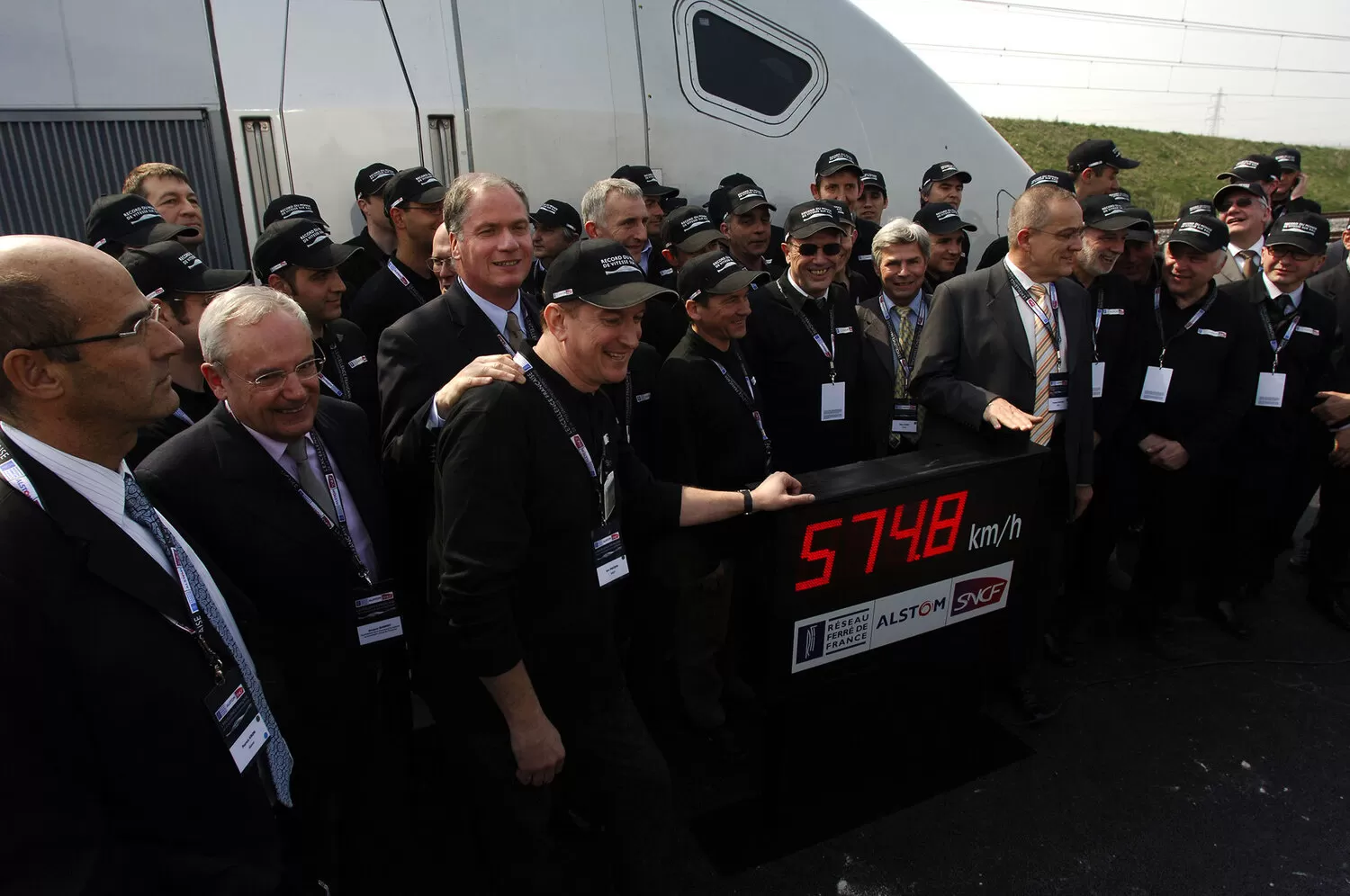
Source: auditoire.com
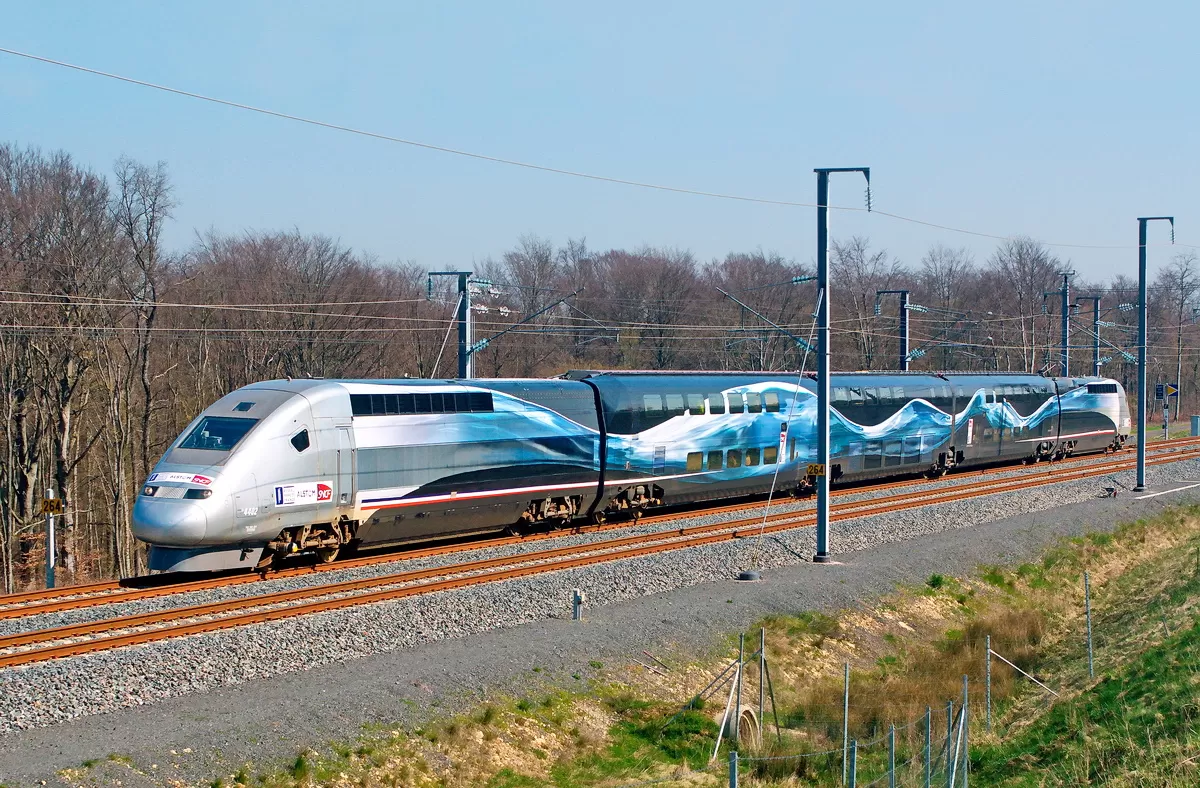
Source: Jean-Marc Frybourg
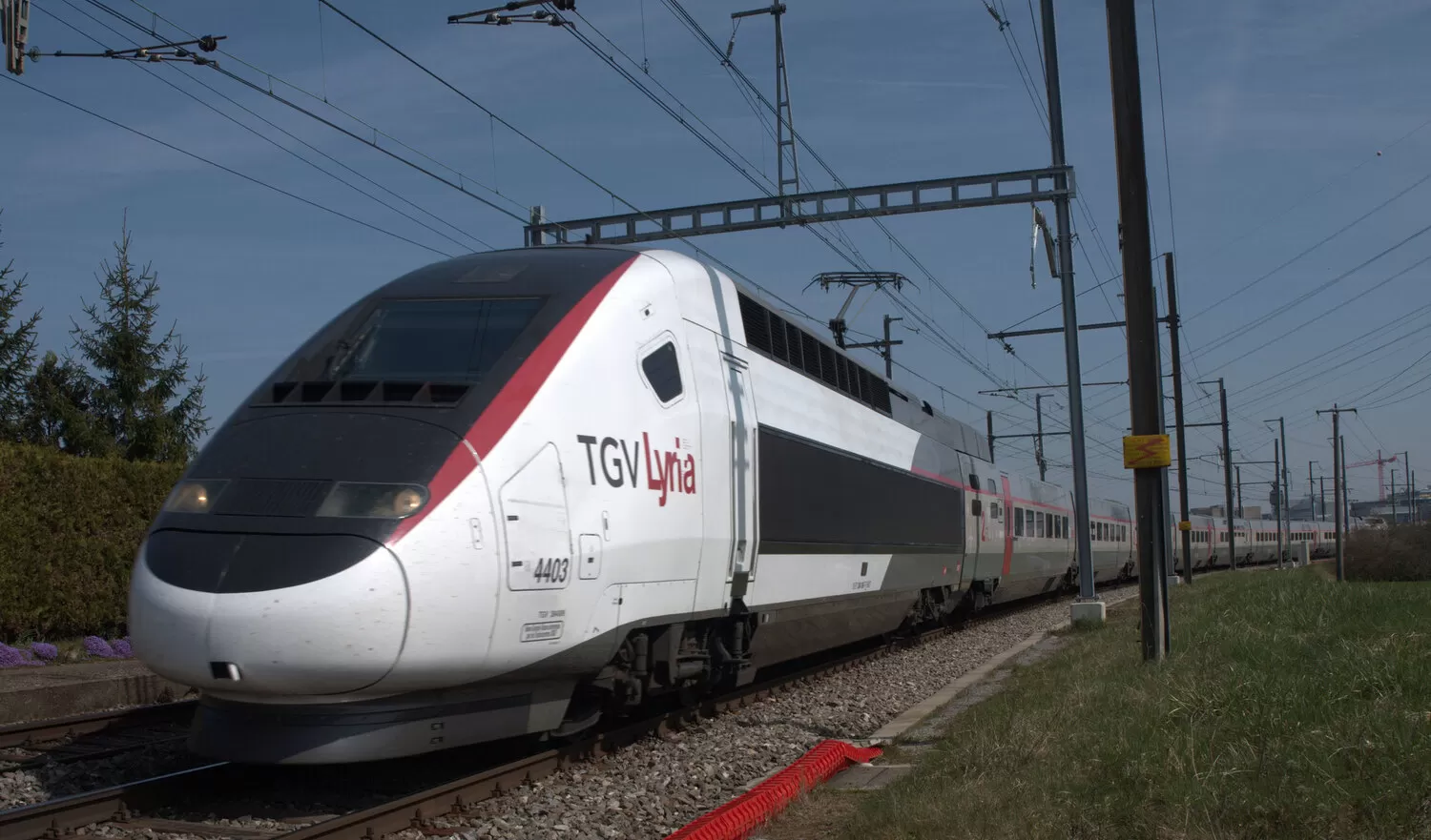
Source: Markus Eigenheer
Vehicle type:
Registration country:
Railway companies:
The TGV POS (where POS stands for Paris - Ostfrankreich -
Süddeutschland) is a TGV designed and produced by Alstom for the
French National Railways (SNCF) in the 2000s, for the opening of
the LGV Eastern European high-speed line, to provide services
beyond Strasbourg, to Germany and Switzerland.
Unlike the first high-speed lines, the SNCF has not put into
service entirely new trains. The 19 TGV POS are in fact the
assembled of 38 new vehicles able to drive in Germany and
Switzerland & 19 sets of existing TGV trailers, renovated according
to Christian Lacroix's design, with the installation of a pair of
electromagnetic brake pads for emergency braking in Germany on each
of the extreme bogies of the end cars.
The TGV POS are also equipped with some other new technologies:
- asynchronous traction chain;
- multiple signalling systems: KVB and TVM (France), PZB and LZB
(Germany), ZUB (Switzerland) and ERTMS level 2
These engines are not the first ones to be able to circulate in
Switzerland, but these are the first ones to develop the necessary
power at high speed under the Swiss voltage. The previous engines
did not need to exceed 100 km/h between Vallorbe and Lausanne (NB:
later on these engines were modified to be able to circulate at 160
km/h on the Mattstetten - Rothrist line in order to provide
connections to Berne and Zürich).
2007
January
New World Rail Speed Record
The main factors that made this record possible:
- a long section of the LGV Eastern European high-speed line has curves of very large radius, favorable to traffic at very high speed. The entire line is designed to allow trains to travel at least 360 km/h even if the commercial speed at the beginning will be 320 km/h (against 300 km/h for the LGV Atlantic high-speed line on which took place the previous world record of 1990).
- the new, more rounded train design, introduced with the third generation TGV (TGV Duplex) in 1996, ensured better train aerodynamics and therefore better material behaviour at very high speeds (over 500 km/h). For the test train the aerodynamics have been optimised even more: flush windshield, lower guard on the rail, complete rollover of the front engine roof, partial rollover of the tail engine roof (where the pantograph was installed) etc. Reinforcements were also made to increase resistance in case of a potential shock with an animal but also to improve air resistance: lateral support points, roofing straps on the hood. The wipers were also removed.
- the 4402 test train (also known as V 150 train-set), consisting of two TGV POS motor coaches and three TGV Duplex cars (with a total length of 106 meters - twice as short as a standard TGV - it weighs 268 tons), integrated the latest technologies from Alstom and included an intermediate car on motor bogies of a new type built especially for this occasion. The power of this train has also been increased to 19,600 kW, more than double that of a conventional TGV POS train (9,280 kW). The diameter of the wheels of the motor has been increased to 109.2 cm against 92 for a series train-set in order to limit the rotation speed of the engines.
- the voltage of the catenary has been raised to 31 kV against 25 kV in normal use and its mechanical tension to 4000 daN against 2600 daN usually. The train is powered by a type CX pantograph (lightened, auto-piloted, speed-controlled and able to measure effort, acceleration and displacement). The controlled reaction of the pantograph based on train's speed makes it possible to cancel the aerodynamic effects which start at 530 km / h. The goal is to avoid disjunctions between the catenary and the pantograph to transmit the maximum power. The capture head is of the single-band type.
More than 600 sensors have been installed on board to gather technical information during the high speed tests.
Before making the official and homologated attempt to exceed 515.3 km/h of the previous world record, a test campaign was carried out from January 15, 2007. 40 test runs, mobilising 300 engineers and technicians, were performed at over 450 km/h. Each test required 40 technicians aboard the TGV.
The previous record of 1990 was unofficially beaten more than ten times during tests. The test train reached 553 km/h on February 13, 2007 according to an article in the "Le Parisien" newspaper published the following day (554.3 km/h according to the SNCF) then 559.4 km/h on February 20th and even 568 km/h on March 29th.
Concerns registration number(s):
2007
April 3
After 10 km, the train's only pantograph is lowered for 2 km, and the train passes through the zone in which the power supply goes from 25 kV to 31 kV, a voltage that provides the necessary power to exceed 500 km/h. . The pantograph is then raised again, and after 10 minutes, the speed of 515.3 km/h (previous official record) is exceeded. After 13 minutes, the maximum speed of 574.8 km/h (or 159.7 meters per second) is reached in the commune of Éclaires (Marne), at KP 193.2, exceeding the initial target of 540 km/h (150 m/s).
Concerns registration number(s):
2007
May 11
2012
The sale thus became effective at the SNCF 2012 annual service change. On this occasion, a renovation is planned, with interior refurbishment and a new livery.
Lyria decided to transfer the departure of all its services from Paris - Gare de l'Est to Paris - Gare de Lyon. For the sake of convenience and to avoid spurious transfers of trains, the management and maintenance of the trains was also transferred from the Technicentre de Paris - Ourcq to South-East European Technicentre of Conflans.
Do you have additional informations regarding this vehicle?
Help us writing the history of TGV POS! Your knowledge is precious for us and the entire community, do not hesitate to share your facts, photos or videos:
Latest update on the 31st of January 2018 at 23:44
Contributor(s): Tudor C.
Discussion forum













